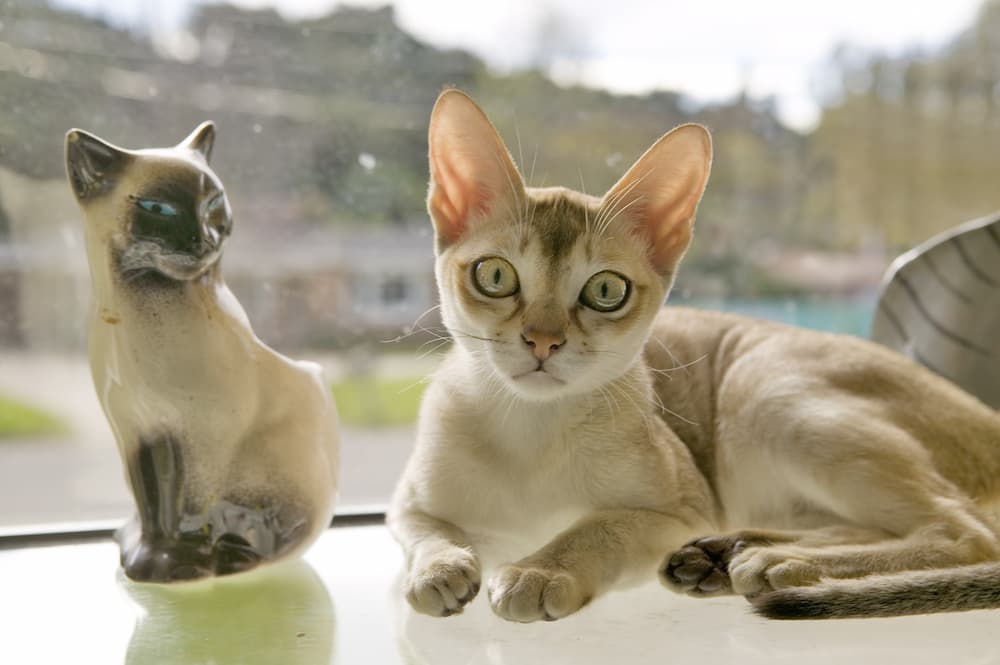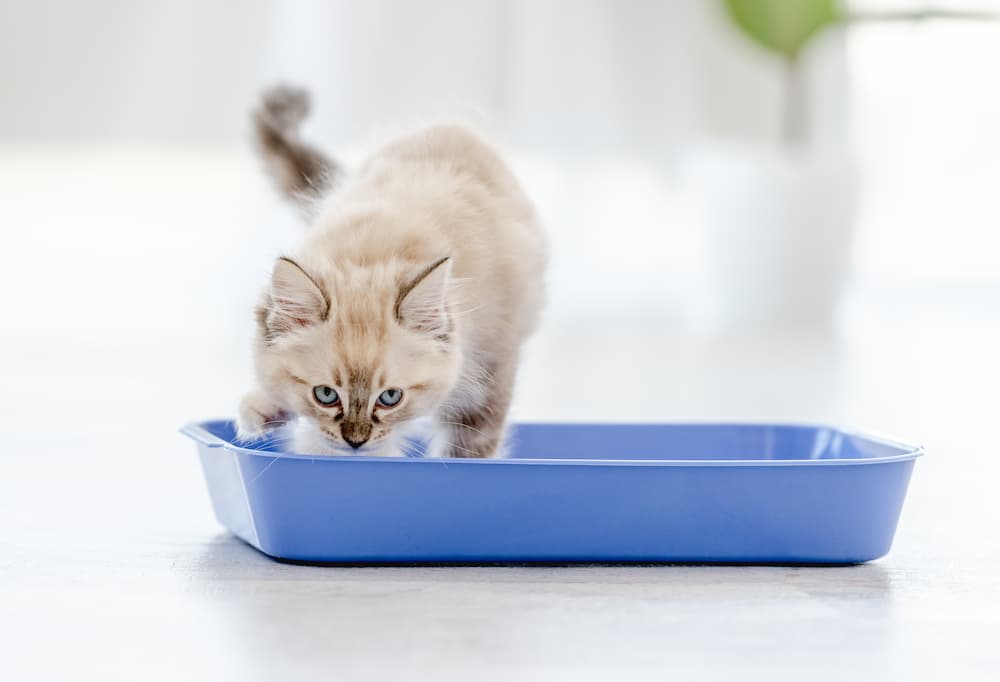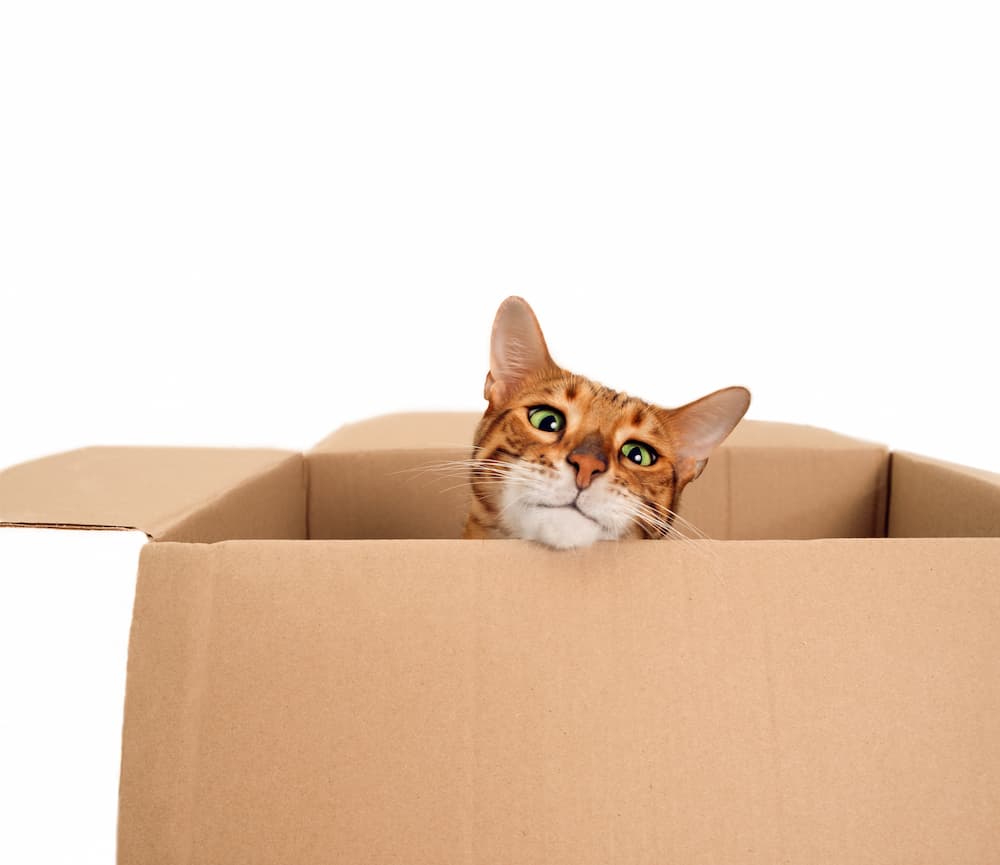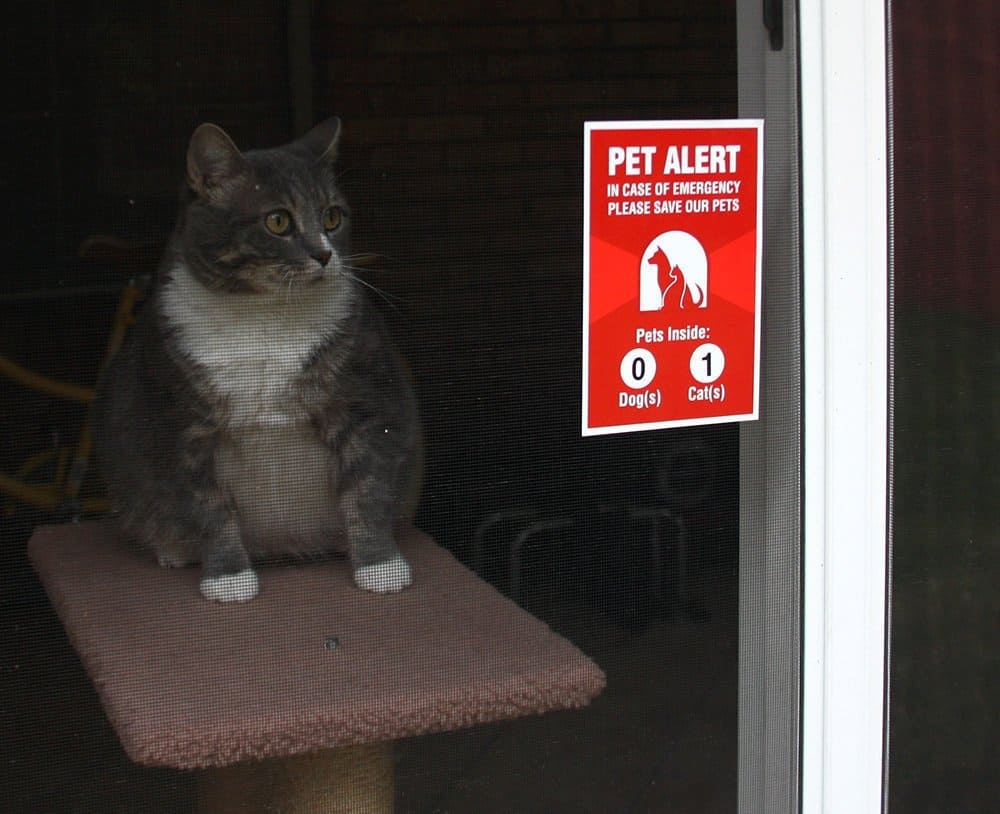According to the National Fire Protection Association (NFPA), more than half a million cats, dogs, and other pets are killed or injured in fires every year. A house fire is, without a doubt, one of a pet parent’s worst nightmares. Here are 6 things you can do to help protect your cat from a fire:
1. Smoke Alarms
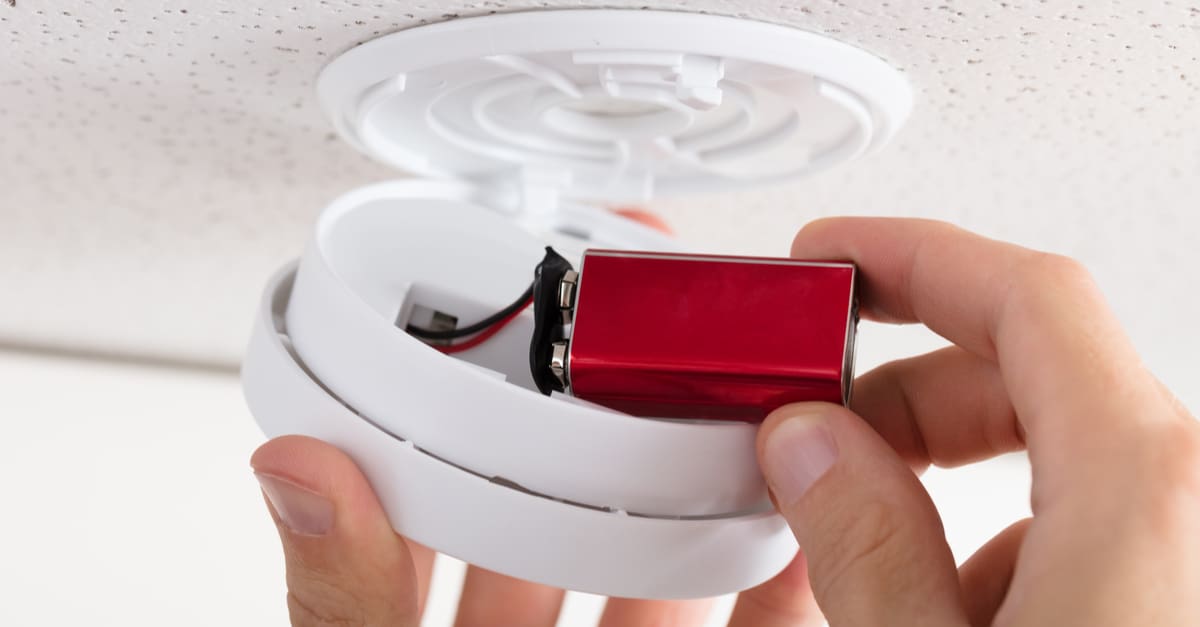
Install smoke alarms throughout your house. The NFPA recommends one smoke alarm on each floor of your house, one in every sleeping area, and one in every bedroom. If your smoke alarm is battery-powered, do a monthly check to make sure the batteries still hold a charge. Smoke alarms should be completely replaced every ten years. It’s also a good idea to connect those smoke alarms to an alarm monitoring service. They will immediately notify the fire department if smoke is detected – and that means help will arrive sooner.
2. Be Careful with Open Flames

If you’ve ever lit a candle, you probably noticed your cat curiously sniffing the flame! Pets accidentally start 1,000 house fires each year – and that’s often by knocking over a lit candle! Don’t ever leave open flames unattended, and be sure they’re fully extinguished when you’re done with them. Consider using flameless candles instead of traditional candles.
3. Pet Proofing
Take extra care to cat-proof your home. Curious cats jumping on the stove to see what treats might be there can easily bump the knobs, turning them on and igniting any nearby objects. Stove knob covers are a great safety feature for pets and kids.
4. Practice Evacuation with Your Cats
It’s a good idea to have an emergency evacuation plan in place – and obviously, you should include your pets in the plan! Practice how you plan to escape in the event of a house fire. Assign an adult family member to be in charge of getting each pet out of the house.
5. Window Stickers
Window stickers are an easy way to alert firefighters that you have pets that may need to be rescued. Mark the sticker with the number of pets you have in your home and place stickers at all the access points of your home, like your front and back doors.
6. Have a Pet Emergency Kit
It’s a really good idea to have an emergency kit prepared for your cat – not just for a fire emergency, but to be prepared for anything! Your kit should include a carrier, 72 hours worth of food and water, any medications, a disposable litter box, and some litter. You can even find pre-made cat emergency kits that include everything you need should you have to evacuate in a hurry.
It’s not a bad idea to keep a copy of your cat’s medical records in the kit, too. Store it somewhere you can quickly grab it. Make sure you also have enough carriers to hold every cat you own. In the event of an emergency, the chaos and noise could spook even the calmest cats so, for their safety, keep them all in carriers.
House fires are dangerous and terrifying. With a little bit of prevention and preparedness, you increase your cat’s chance of survival dramatically.
Do you have an emergency plan in place for your cats? Tell us!
If you found this article helpful, pin it!




